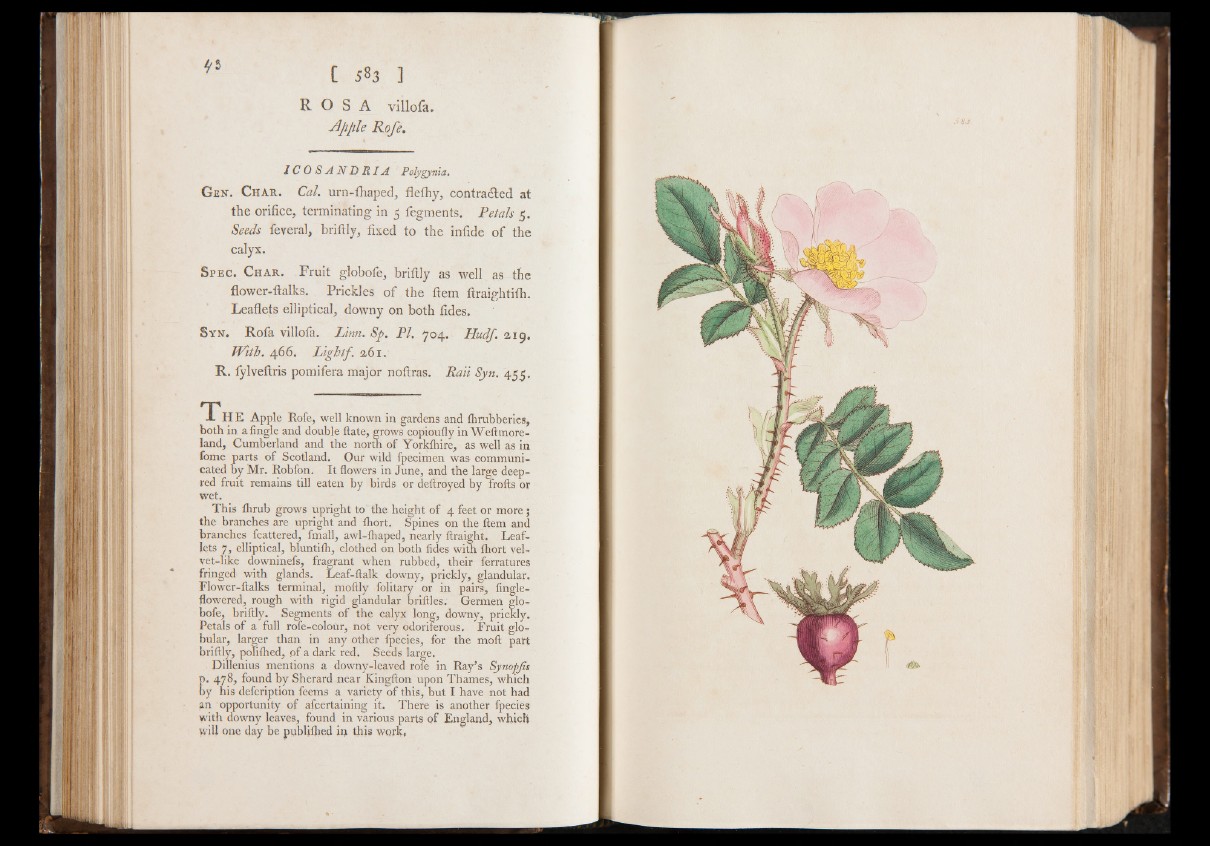
[ 583 ]
R O S A villofa.
Apple Roje.
* 5
I C O S A N D R I A Polygynia.
G en. Ch a r. Cal. urn-fhaped, flefhy, contra&ed at
the orifice, terminating in 5 fegments. Petals 5 .
Seeds feveral, briftly, fixed to the infide of the
calyx.
Spec. Char. Fruit globofe, briftly as well as the
flower-ftalks. Prickles of the ftem ftraightilh.
Leaflets elliptical, downy on both tides.
Syn. Rofa villofa. Linn. Sp. PI. 704. Hudf. 219.
With. 466. Lightf. 261.
R. fylveftris pomifera major noftras. Rail Syn. 455.
T H E Apple Rofe, well known in gardens and thrubberies,
both in a Angle and double ftate, grows copioufly inWeftmore-
land, Cumberland and the north of Yorkfhire, as well as in
fome parts of Scotland. Our wild fpecimen was communicated
by Mr. Robfon. It flowers in June, and the large deep-
red fruit remains till eaten by birds or deftroyed by frofts or
wet.
This flirub grows upright to the height of 4 feet or more;
the branches are upright and fliort. Spines on the ftem and
branches fcattered, fmall, awl-fhaped, nearly ftraight. Leaflets
7, elliptical, bluntith, clothed on both tides with fliort velvet
like downinefs, fragrant when rubbed, their ferratures
fringed with glands. Leaf-ftalk downy, prickly, glandular.
Flower-ftalks terminal, moftly folitary or in pairs, tingle-
flowered, rough with rigid glandular briftles. Germen globofe,
briftly. Segments of the calyx long, downy, prickly.
Petals of a full rofe-colour, not very odoriferous. Fruit globular,
larger than in any other fpecies, for the moft part
briftly, polifhed, of a dark red. Seeds large.
Dillenius mentions a downy-leaved role in Ray’s Synopjis
p. 478, found by Sherard near Kingfton upon Thames, which
by his defcription feems a variety of this, but I have not had
an opportunity of afcertaining it. There is another fpecies
with downy leaves, found in various parts of England, which
will one day be publifhed in this work,